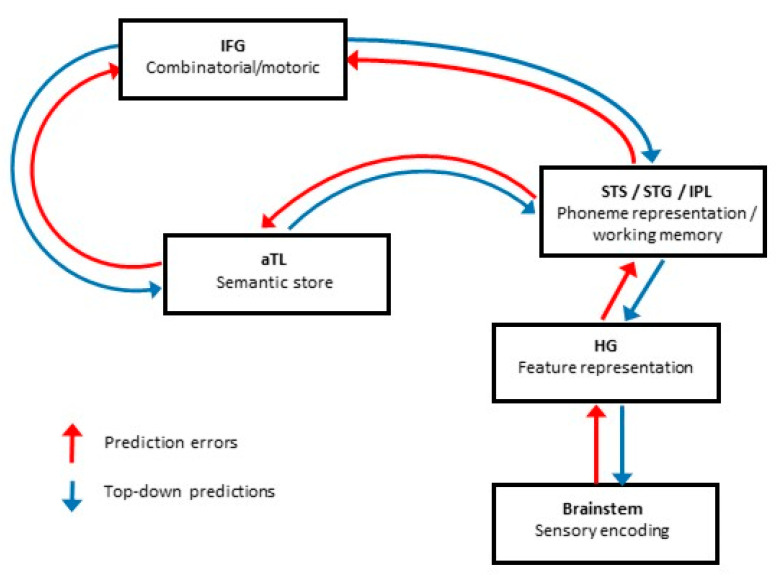Figure 1.
A predictive coding model of normal degraded speech processing with major anatomical loci for core speech decoding operations and their connections, informed by evidence in the healthy brain. Different kinds of degraded speech manipulation are likely to engage these cognitive operations and connections differentially (see Table 1). Incoming sensory information undergoes “bottom-up” perceptual analysis chiefly in early auditory areas, while higher level brain regions generate predictions about the content of the speech signal. Boxes indicate processors that instantiate core functions; note, however, that processing “levels” are not strictly confined to higher-order predictions or early sensory input: interactions occur at each level. Arrows indicate connections between levels, with reciprocal information flow mediating modulatory influences and dynamic updating/perceptual learning of degraded speech signals. This figure is necessarily an over-simplification; cortical areas that are likely to have separable functional roles are grouped together for clarity of representation, and while they are not shown in this figure, intra-areal recurrences and inhibitions alongside other local circuit effects may also be operating within these regions. aTL, anterior temporal lobe; HG, Heschl’s gyrus; IFG, inferior frontal gyrus; IPL, inferior parietal lobule; STG, superior temporal gyrus; STS, superior temporal sulcus.

